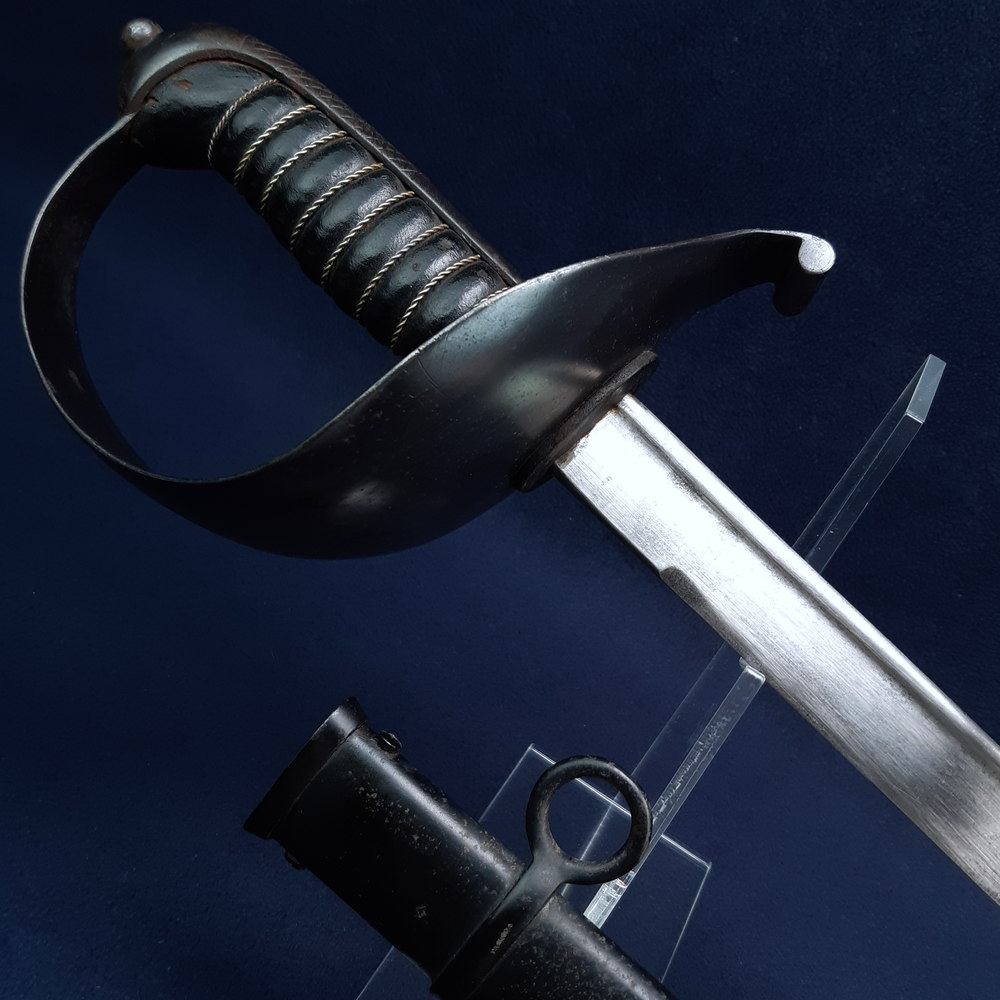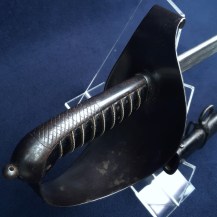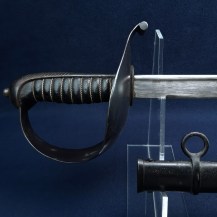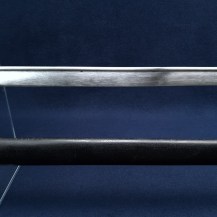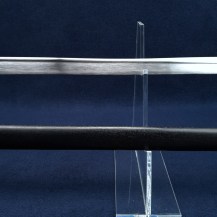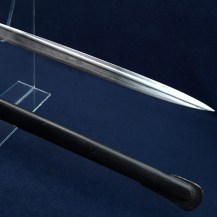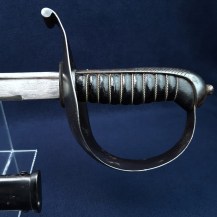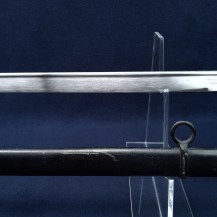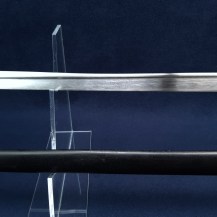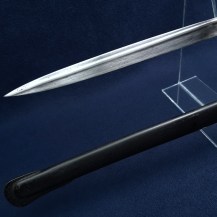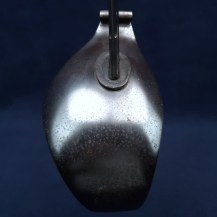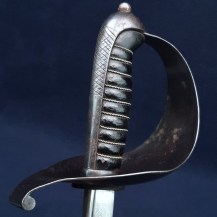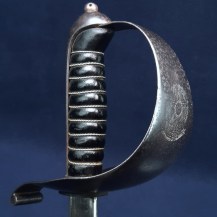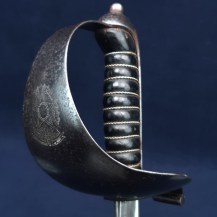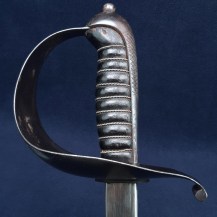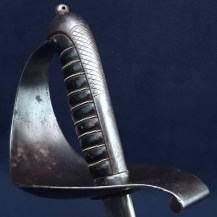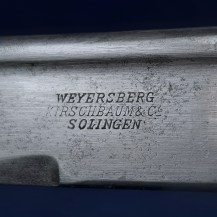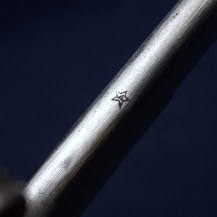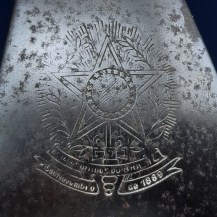Brazilian M1899 Cavalry Trooper’s Sword by Weyersberg, Kirschbaum & Co.
Pipeback blade with spear point. Black leather washer, smooth steel ferrule, steel backstrap with incised hatching, integral pommel with tang button. Grip of black leather bound with wire over wood core. Steel bowl hilt with quillon, steel scabbard with single fixed hanging ring and frog loop. Blade 33 inches in length past the washer, the sword 39½ inches overall.
The blade is stamped at the ricasso on one side with the German manufacturer’s name ‘WEYERSBERG, KIRSCHBAUM & CO SOLINGEN’, and on the spine with a 5 pointed star surrounding the letter ‘A’, which is a Brazilian inspection mark. The outside of the hilt is stamped with the crest of the then newly formed Brazilian Republic, including 5-pointed star and banners reading ‘ESTADOS UNIDOS DO BRAZIL’ and ‘15 De Novembro De 1889’, the latter being the date of its establishment.
Brazil, like many of the newly independent South American republics, lacked much of the infrastructure needed for arms production, so were forced to import instead. Germany was the main source: the manufacturers at Solingen had the capacity to produce swords at scale and quality, Germany had no colonial interests in South America to conflict with doing business and in fact there had been significant migration from Germany to Brazil in the 19th century, beginning with German mercenaries hired by Brazil in the 1820s. This migration was encouraged by the Brazilian government to populate and develop their southern states.
The Brazilian M1899 used the same blade as the Prussian M1889 cavalry trooper’s sword, which would have allowed Weyersberg to produce it on their existing tooling. Its scabbard is likewise nearly identical, with only a slightly different throat piece to distinguish it. Only the hilt and grip are substantially different – the guard is thinner and requires no piercing compared to the German design so would have been cheaper to make, while the Brazilian grip is a more traditional in shape and material than the Prussian’s riveted Bakelite grips.
The Brazilian Republic made extensive efforts in the early 20th century to cut its reliance on imported arms, and by 1911 was manufacturing many iron articles for the cavalry at its own production facility, the Arsenal de Guerra do Rio de Janeiro, which may have included scabbards as some scabbards for this model bear the mark ‘AGRJ’. This example’s scabbard is not so marked, so it is probably German import. Besides supplying arms Germany was a key influence on Brazil’s military doctrine in this period, with the Republic using the Imperial German Army as a model for the modernisation of their forces until it was supplanted by a French military mission to Brazil in 1919.
The blade is excellent, bright with no edge damage and only a few spots of light patination. The hilt, ferrule, backstrap and scabbard all retain a deeply blued finish with some spotted dark patination and very minor wear at raised edges. The grip’s wire binding is all intact and tight, some very small patches of abrasion to the grip leather at the pommel end. The scabbard has only a few very shallow dents and retains both of its throat screws. It has been painted black, most of this paint is intact with a few scrapes and some spotted wear.

